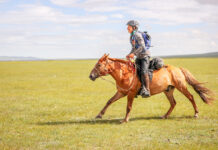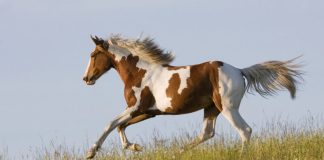The sliding stop is reining’s signature maneuver. The horse runs at top speed down the length of the arena, and then on a loose rein, lowers his hindquarters to the dirt as his front feet pedal for another 10 to 20 feet until he completely stops, sending dirt spraying in his wake like a jet-skier.
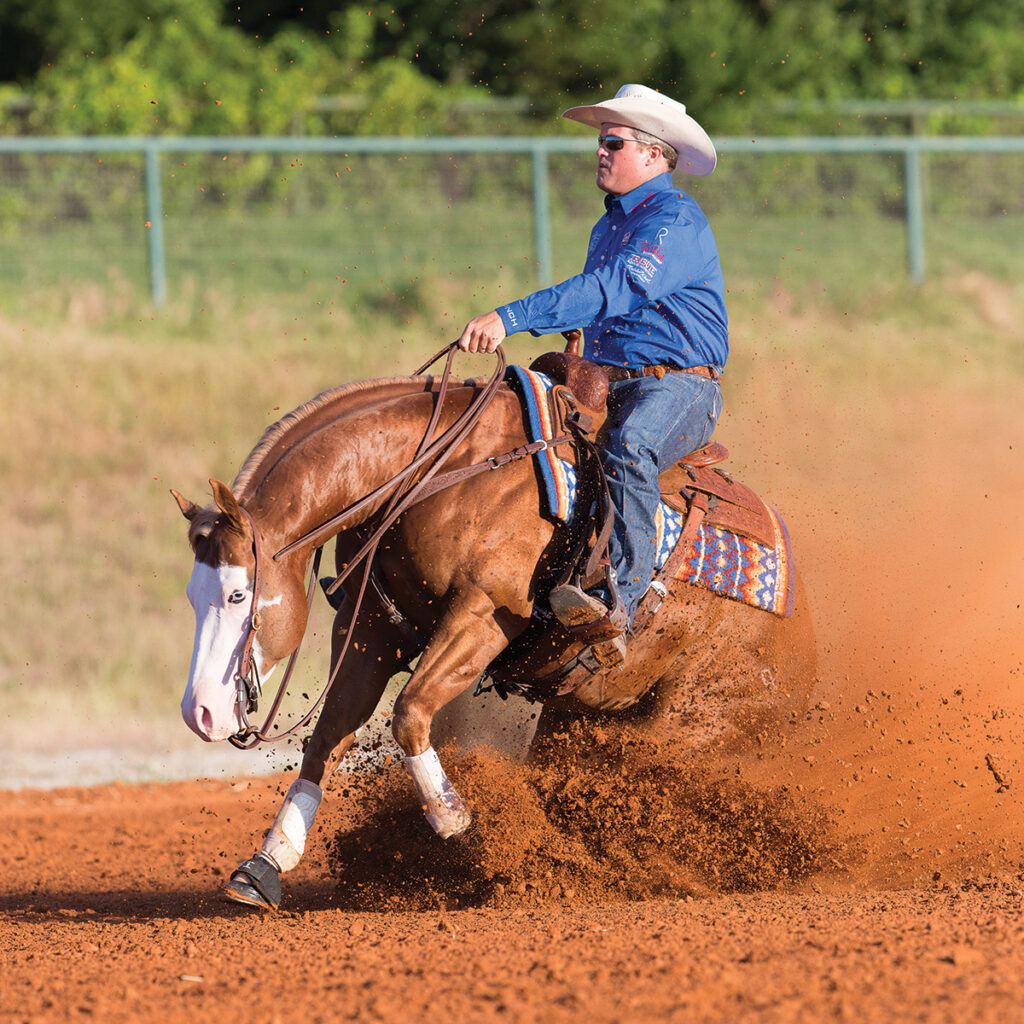
Deary is a reining trainer from Weatherford, Texas, with multiple world championships, National Reining Horse Association Futurity titles, National Reining Breeders Classic titles and multiple other major reining championships.
Sliding Stop Goals
Instead of thinking about stopping your horse on a dime, Deary says you want your horse to drop his hocks and continue to go forward, while you appear to sit quietly.
“In a perfect world, your horse should accelerate all the way to the stop, and you should theoretically only have to say ‘whoa’ to get him there,” says Deary.
Necessary Tools
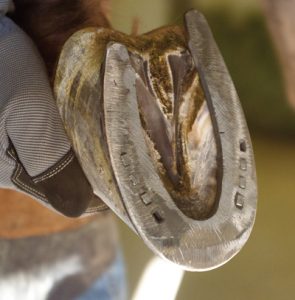
To do this, your horse needs to be able to stop forward motion in response to your rein and voice cues. A horse that continues forward without responding to you will not be able to give you a good stop.
While you might not need extra-long slider plates (horseshoes) to get a stop, Deary says most horses are going to need some kind of sliding shoe for their hind feet. You’ll want to discuss shoes with your farrier before you begin this move.
The Step-by-Step Stop
Deary says when you lope off at the beginning of a rundown, make your intentions clear.
“If I lope off, sit back and cluck, I want the horse to start running, and I want him to continue running ahead of me without me having to kick him forward,” he says. “I need to make sure he’s accelerating every single stride. You don’t want your horse to lope slowly to the middle of the pen and then start running, or speed up and slow down going down the line.”
Aim for as little of your own body movement as possible before your horse begins the stop.
“Sit back, keep your eyes up and your shoulders back,” says Deary. “Think about sitting back in a recliner. I want my hips to be rotated back into the saddle. Pointing my belt buckle up, I want my shoulders to be behind my hips and my feet to be in front of my hips.”
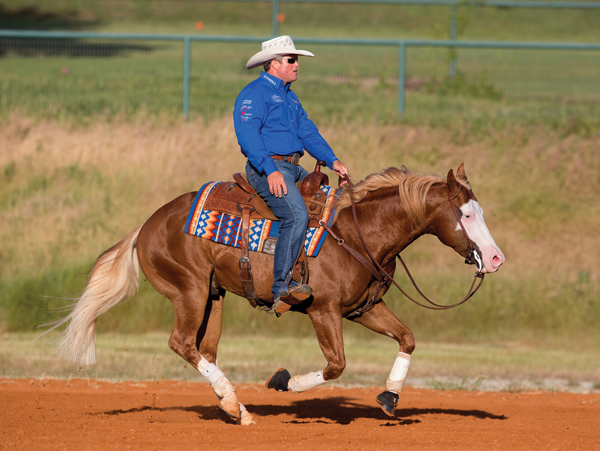
Your horse should increase speed with every stride, allowing him to drive his hocks deeper and lift his withers higher, which makes it easier for him to bend his back and slide.
If he slows down to stop, his front end will drop, making it very hard to slide. Visualize a speed boat in the water, says Deary.
The key to engaging the stop is your voice command. Ask for greater speed, sit back so that your horse’s movement is in front of you, and then say “whoa,” allowing his hindquarters to drop into the ground as you continue moving forward.
Troubleshooting
Deary recommends avoiding “scuba diving,” meaning you don’t want to kick your feet forward and throw yourself backward right before you ask for the stop.
“At that point, you’ve changed how the horse has to balance your weight,” he says.
Avoid slowing down before you stop. Look ahead to outside the end of the arena to avoid unconsciously taking your foot off the gas.
With this method of stopping, your stop cue isn’t dependent on timing to the horse’s stride, but you do need patience.
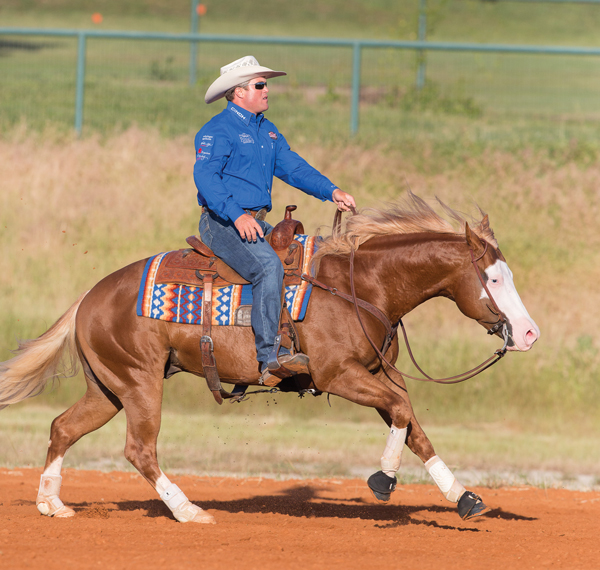
“My horses run till I say ‘whoa’ or until I pull—then my timing doesn’t have to be perfect,” says Deary. “On the flip side, [once I give the cue] I have to allow the horse to finish that stride before he gets into the ground. It may take a stride or two before he actually stops. Just hold your body quiet and still until he completes the stop.”
If your horse is resistant to stopping for any reason, make sure he is sound, without issues in his teeth or joints, and make sure his equipment is comfortable.
Plus Moves
Once you’ve mastered the stop, aim for precise completion. Each reining pattern has a designated area for stopping, and to “plus” your maneuver (increase your score), you want to nail that spot.
Make sure to accelerate smoothly throughout the move.
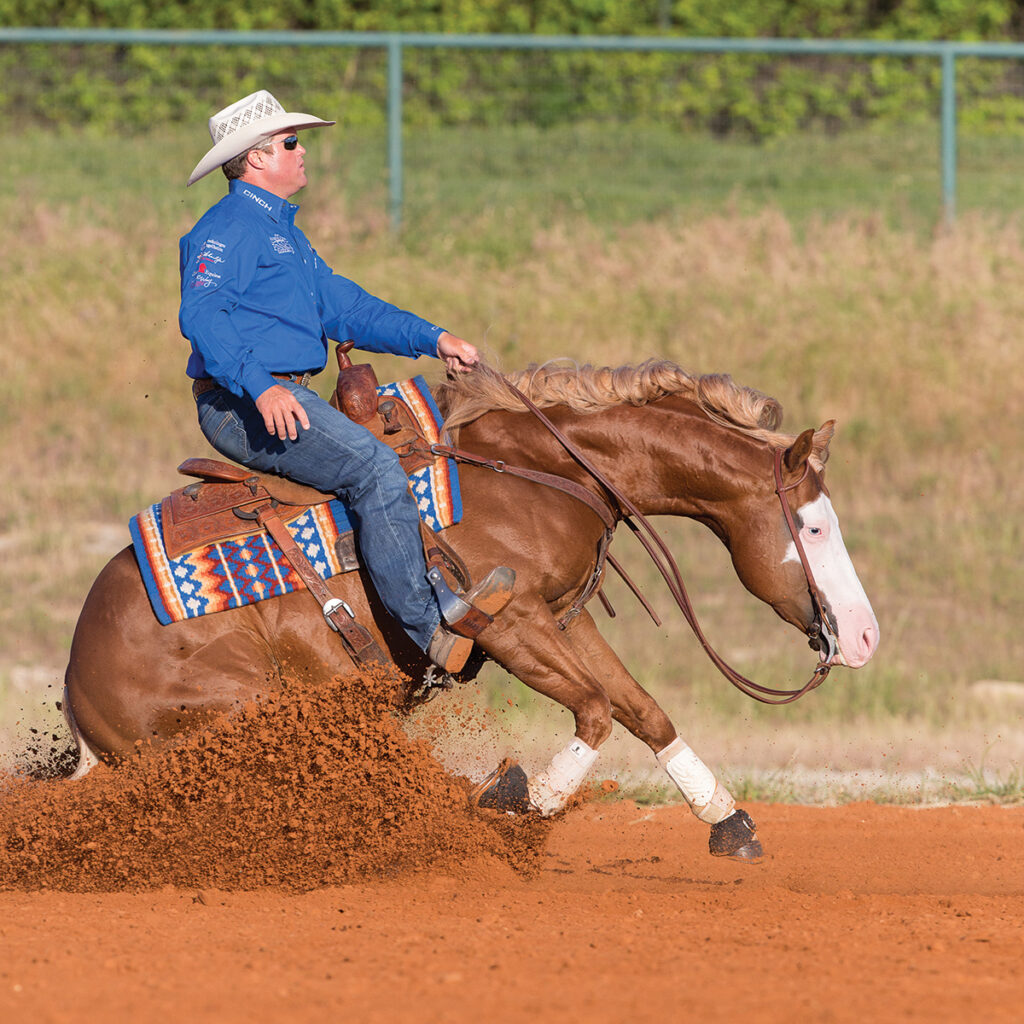
Each part of the maneuver earns points: the approach, the stop and the rollback or the back up. You want to make sure you have a willing, smooth stop with a clean rollback or backup.
Improving Your Performance
If you’re struggling with the stop, consider taking a lesson or working with a trainer by sending a video of your ride to get advice.
“A lesson with an expert will make it drastically easier—it’s money well spent,” says Deary. “And many trainers will be willing to help you if you send them a video and ask for feedback.”
This article about how to improve your reining sliding stops appeared in the July 2020 issue of Horse Illustrated magazine. Click here to subscribe!



